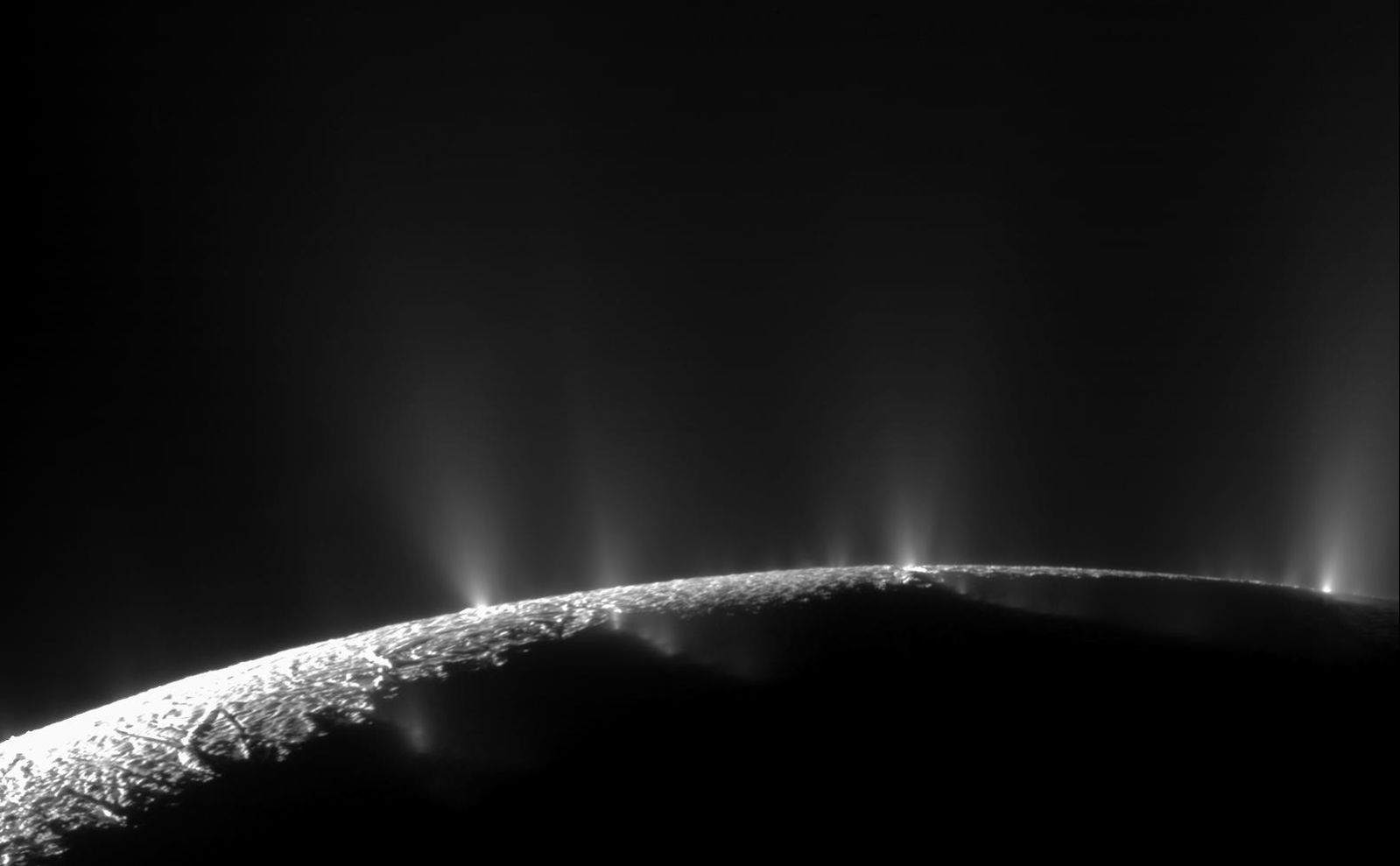Scientists have detected methane in plumes on Enceladus. Enceladus is an icy moon. It is one of the 82 moons of planet Saturn which is the fifth from the Sun in ascending order. They claimed to observe an unknown process on the moon that produces methane. The activity was reported beneath the icy shell. Scientists, however, could not explain the levels of methane. They said that known geochemical processes can’t tell about methane levels that the Cassini spacecraft measured on Enceladus. The study assumes significance as it indicates that life can exist in the liquid methane. Past studies have speculated that life can exist in the liquid methane. But the only presence of methane does not necessarily mean that the place is habitable.
The icy moon has been a topic for research and study for scientists due to the giant water plumes that erupt on it. Scientists believe that the vast ocean on Enceladus is sandwiched between its rocky core and icy shell. The Cassini spacecraft had flown through its plumes. It even sampled the chemical compounds. The spacecraft observed a high concentration of some specific molecules. These molecules were similar to hydrothermal vents of oceans on Earth. It detected methane in the plumes. The amount of methane was relatively high and very surprising. Researchers said that searching for microbes on the moon is a challenging task. It needs deep-dive missions. Such missions are not possible on Enceladus or any other object at least in the near future.
Scientists said that they combined new mathematical models with geochemistry to analyze methane in plumes of Enceladus. They observed microbial hydrothermal vent activity. They said that the process may not involve life and differs from what happens on Earth. The Cassini spacecraft had in 2015 detected blasting water ice particles from the south pole of Enceladus. It is believed that Saturn’s second-outermost ring materials come from an ocean of liquid water. That water flows beneath the icy shell of Enceladus. The spacecraft made numerous close flybys of Enceladus. It also detected many other compounds like dihydrogen and organic compounds with carbon. Cassini was launched by NASA in 1997. It entered into Saturn’s orbit in 2004. It circled the planet for 13 years. The mission ended in 2017 with Cassini burning up into Saturn’s atmosphere.
